How to Learn to Play the Guitar From Scratch
Learning to play the guitar may seem like a very complicated process, especially if you don’t have much time available between your daily tasks. 5-Minute Crafts is showing you how to get started through 8 steps. You just need to be consistent and make the most of the time you dedicate to learning the instrument.
1. Hold the guitar properly.

Sit in a comfortable chair so that your body relaxes and you can keep your back as straight as possible. Lift your left leg and preferably rest your foot on a footrest.
Place the body of the guitar on your left thigh, with the neck at an incline of 45°, holding it only on the thighs; the left elbow and thumb should remain behind the neck. Rest your right forearm on the body so that your hand is in a comfortable position to pluck the strings.
2. Learn the names of the strings.
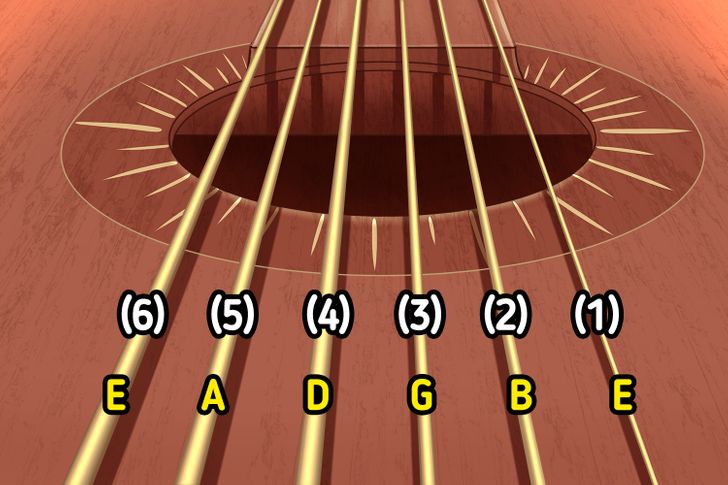
Learn the names of each guitar string:
6. E
5. A
4. D
3. G
2. B
1. E
3. Tune your guitar.
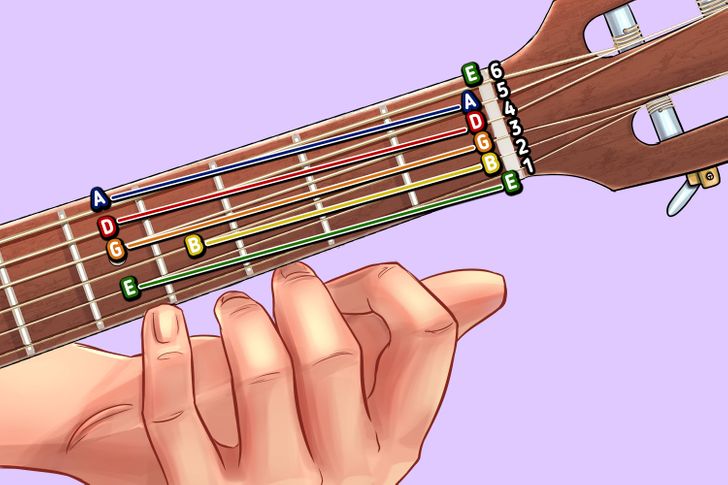
To make the sounds higher or lower, you will have to adjust or readjust the tuning pegs. Start by tuning the fifth string in the air (A) to the fifth fret of the sixth string (its sound is also A). Once both are at the same pitch, go on to tune the fourth string; that is, compare the fourth string in the air with the sound of the fifth string, the fifth fret. Look at the image. Repeat this procedure downward until the whole guitar is in tune; note that the second string (the B) must be compared with the third string, the fourth fret. If this method is too difficult for you, you can get an electronic tuner or an online tuner.
4. Read tabs.
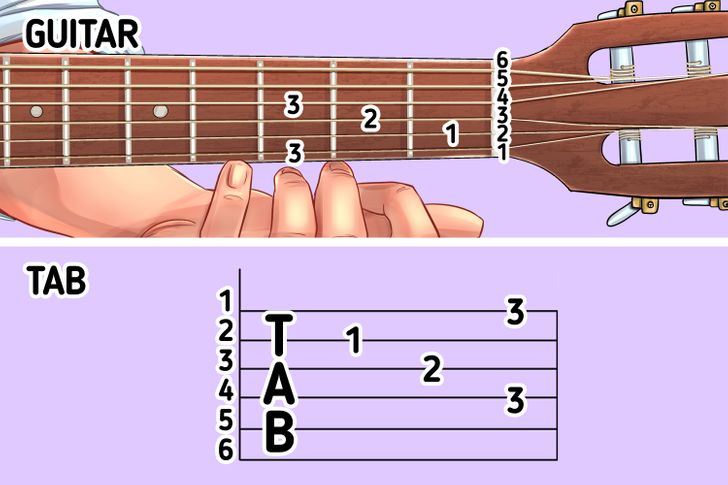
Learning to read tablature is a good idea because it’s relatively simple and very useful. In a tablature, each number represents the fret of the neck that you should press on. If this number is zero, the string should sound in the air. When the numbers appear in a vertical line (like 3 in the image above), their respective sounds have to be played at the same time. On the other hand, if they are separated, you must play them in the order shown.
5. Warm up before practicing.
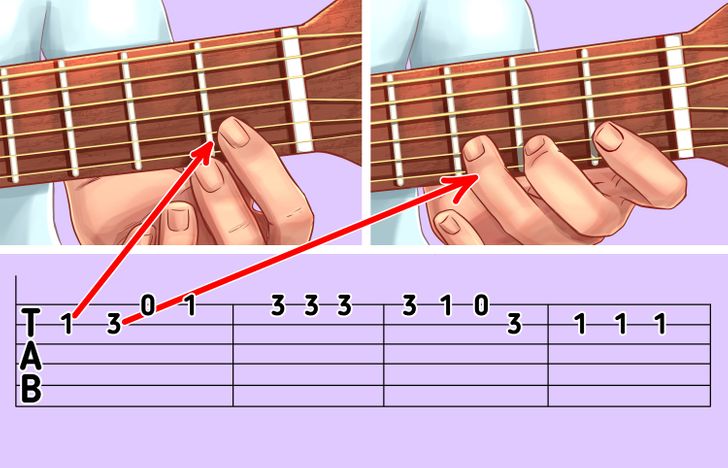
It’s important to warm up the fingers of both hands with mechanical and coordination exercises. You can begin, for example, by practicing “plucking” the first and second strings, as shown in the tabs in the image. As for the right hand, alternate the index, middle, and ring fingers in such a way that you play each sound with a different finger.
When you feel you are mastering these exercises, move on to the G and D strings (third and fourth). You can add the thumb of the right hand to pluck the remaining 2 strings (the E and the A).
6. Play some simple melodies first.
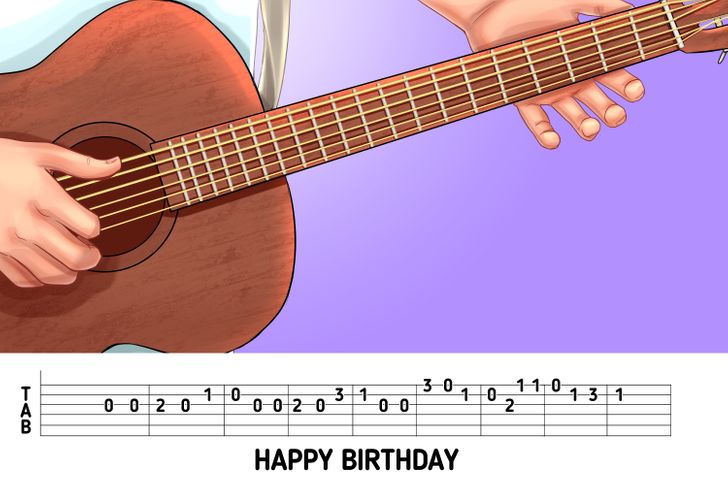
You can start with simple plucks, which include many “air” notes or those that aren’t too complex for the left hand. Create your own melodies or repeat an easy one, like “Happy Birthday.” The idea is to become more and more familiar with the guitar. Keep in mind that for the right hand, there are mainly 3 ways to play a sound:
7. Work on the agility of your fingers.
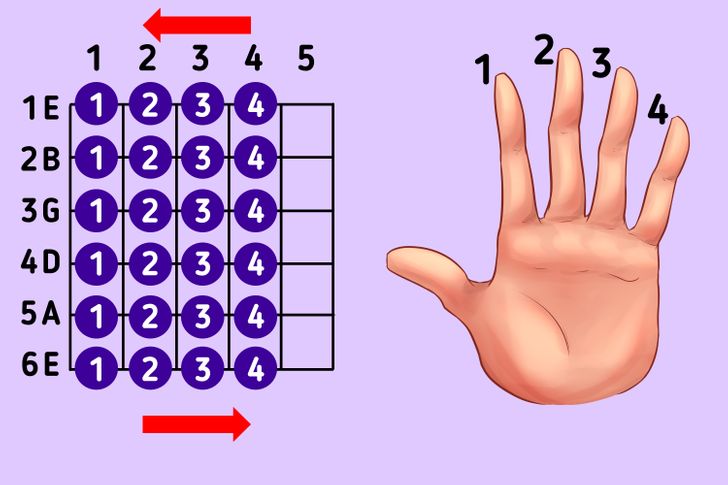
Perform exercises that help your fingers become more agile, such as fingering, which is performed as follows:
- Start with the sixth string. Press the index finger (1) of the left hand on the first fret, then the middle finger (2) on the second fret and so on up to the little finger. Try to make the coordination with the right hand as good as possible.
- Repeat the same exercise with all the strings.
- Now do it in reverse, starting with the first string.
8. Build a practice routine.
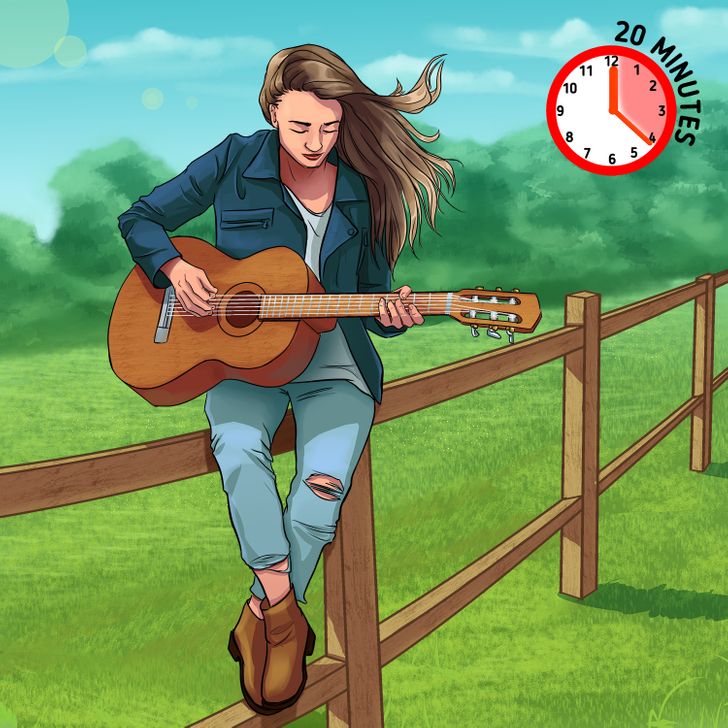
You can put together a simple routine in which you include tablature reading, your favorite fingering, and some fingering exercises. You can practice anywhere between 15-60 minutes per day. After a while, if you maintain regularity, you will notice your progress and be able to incorporate more advanced study material.